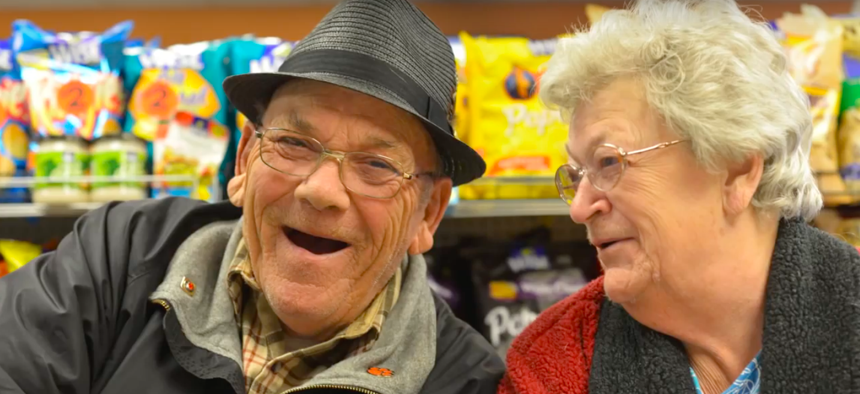How to Rediscover ‘Heart and Soul’ in Small-Town America

Gardiner, Maine used the Heart and Soul engagement process to seek input from community members. City of Gardiner, Maine / YouTube
While there are plenty of great civic engagement case studies out there, they’re not always specifically geared for smaller communities.
SAN ANTONIO — In the world of government, the phrase “join the conversation” can sometimes feel a bit hollow. Sure, it’s important to include as many people and stakeholders in civic discourse to gain their input, but in practice, pursuing an inclusive engagement agenda is often harder than it might seem.
Residents don’t always have the time to show up to public meetings, and those who might want to participate may be overshadowed by the louder voices or in the room. As a result, many valuable voices are never heard from.
While there are plenty of great civic engagement case studies out there, they’re not always specifically geared for smaller communities. On Monday at the International City / County Management Association ’s annual conference, local government leaders from Maine and Washington state discussed their work with “Heart and Soul,” a civic engagement initiative spearheaded by the Orton Family Foundation that’s designed for smaller cities and towns.
“You will have volunteers come out of the woodwork. Through this process, they rediscover what they want in their community,” said David Leckey, the executive director of the Shelburne, Vermont-based foundation.
Leckey was joined by Scott Morelli, the city manager in South Portland, Maine, and Kirsten Sackett, the community development director in Ellensburg, Wash. Both had previously worked in cities—Gardiner, Maine and Cortez, Colorado, respectively—that embraced the Heart and Soul process, which is built around three core principles:
- What matters most?
- Involve everyone.
- Play the long game.
Heart and Soul, Leckey said, “[d]ives deep into the first and foremost question: What do [residents] care about?”
That seems like a simple question, but oftentimes when the public is interacting with their local government, conversations center around what residents don’t like about their community.
With Heart and Soul, “pride and place is renewed” in a community, Leckey said. Residents “discover how many more people care about it just as much as they do. … So many people have the same connection to their community that they do. When they discover that, they’ll roll up their sleeves and do it together.”
Gardiner, located along the Kennebec River about 50 miles northeast of Portland, is a city that shares a story all too common in Maine. The city’s former industrial base was undermined by shifting economic fortunes, jobs left the area, poverty increased and the city’s population decreased by 14 percent since 1990 to around 5,800 residents.
A decade ago, the city placed a bet that a new business park would bring some fiscal stability. Then the financial crash of 2008 hit, and only one business moved in.
“We were losing money and money in the general fund was covering the losses” from the office park, Morelli said.
It’s a set of economic circumstances that can dampen pride in one’s community.
In 2012, Gardinier started working with the Orton Family Foundation to implement the two-year Heart and Soul program, which is offered at no cost to the community. And while the local government is certainly involved, speakers during the ICMA session stressed the importance of it being a community-driven process.
“We did dedicate staff and resources, but we wanted this to not be a city-run process but a community-run process,” Morelli said.
A main feature of the program is a comprehensive outreach effort, going to where “[y]ou have to really go to your residents instead of having them line up for public comments at a meeting,” Morelli said.
That means going to places like coffee shops, laundromats and other places in the community to seek input.
Several team members were designated as “story gatherers,” who conducted one-hour interviews with hundreds of residents over many months. Eleven Heart and Soul “statements” emerged from the process, which were adopted by the city council. In the process, hundreds of people “vetted” the values that came out of the two-year process, and those formed the foundation for a 20-year strategic vision for the community.
The aggressive outreach approach helps give city staff and city council “cover” against accusations that decisions made by officials only considered input from a select few, the panelists said. It also helps make the case to devote more funding and resources to priorities agreed upon by a wide swath of the community.
What has emerged in Gardinier since Heart and Soul? Two new bike trails—“We knew that this is something the community wanted, and we found funding for it,” Moretti said—a sidewalk master plan, free summer concerts in a riverside park and an abandoned 172-year-old church being rehabbed to serve as a cidery and tasting room.
In Cortez, a city of 9,000 residents in southwestern Colorado, one of the priorities for city leaders with Heart and Soul, Sackett said, was to connect with communities usually left out of traditional civic engagement efforts.
That included the Hispanic community and members of local Native American tribes, who live on adjacent reservations.
“We needed to know how to reach out to the Hispanic community and the Native American community,” she said.
Through the Heart and Soul process, Cortez held 55 community-wide events, engaged with 1,350 community members, received more than 900 surveys and had nine hours of video interviews.
The results were a master plan for beautification improvements, downtown revitalization and a new land use code.
“Any community can do it. It is replicable,” Sackett said.
In fact, Sackett is using the Heart and Soul method in her new job in Ellensburg. “It’s absolutely something you can do in your community.”
Michael Grass is Executive Editor of Government Executive’s Route Fifty and is based in Seattle.
NEXT STORY: How Operational Intelligence Is Saving One County Time and Money on Troubleshooting






